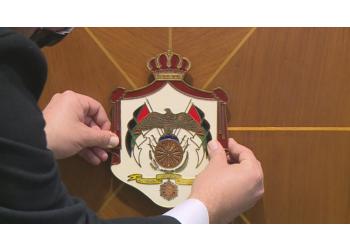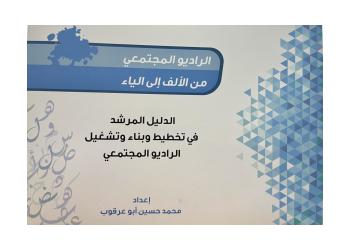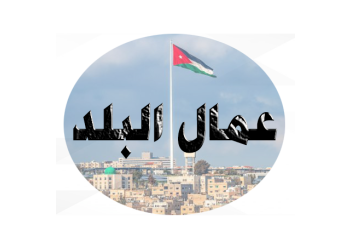
Anyone turning the pages of a tourism guide would know that Amman, spelled Ammann, is the capital city of the Hashemite Kingdom of Jordan. But to many Jordanians it is the city, where they were born and raised, where their lives thrive, and their stories are exchanged and written.
In the past few years a new term was coined to describe the dubious dwellers of Amman, which has always been the center of unity for many Jordanians, including the one who is writing this piece. The term is: Ammani. Those are the brave men and women of the city, where they live, happy or sad, earn a living after shedding blood and sweat, experience their own colorful culture with a mix of Western influence, and eventually like (nearly) everyone else, raise their own offspring within its mountainous boundaries.
But what can a person visiting Amman for a few days or more do? Easy, when in Amman do as the Ammanis would do: visit all the places they grew up around and that they cherished over the years, and most importantly mingle.
The first place that one should visit in Amman is Al Balad (the Down Town Amman). There you must visit Hashem’s, where a hot Fava beans plate along with Hummous and a platter of chopped tomatoes, onions and mint, would most certainly tickle your palate. There you can also read the dozen framed articles hanging on its walls, and that describe its unique place in the hearts of people passing through Al Balad.
Just across the street from the Postal Office one can visit Al Istiklal Bookshop, where time old notebooks, pens, erasers, rulers and drawing pads – my favorite buy – are found. Next to the bookshop’s steep staircase lies Jafra, a café frequented by Jordanians seeking shelter from the heat.
Search the Greater Amman Municipality’s website, www.ammancity.gov.jo, and you will find out that Jordanians refer to Amman as Al Madinah, which is one of the twenty-seven regions constituting Jordan.
Amman has always been the center of arts, culture and literature for Jordanians. It is now filled with over 30 cultural venues, ranging between art galleries, cultural centers and art-house-cum-cafes. The new generation is more and more realizing the necessity of chronicling the tales of its old inhabitants and examining its unique architecture.
Now back to our walk through the crowded streets of Al Balad. Traveling Al Balad should be done on foot so park your car somewhere between the 1st circle, Rainbow Street and Jabal Amman and start walking
There you will be amazed how the old embraces the new, and there you will see people from all walks of life crowding its streets. Some are there to do business and shop, while, others are there to enjoy what a simple walk in the street has to offer: A hustling and bustling sanctuary found amidst faded facades that surround the old streets, where the scent of vegetables, spices and Jordanian air greet one’s sense of smell.
If you find yourself facing an ancient Romanian edifice surrounded by haphazard buildings then you have reached the Roman Amphitheatre. Mind you it is not the only one as Amman, and its surrounding areas, was an ancient Roman colony. If you have the time you must visit Jerash, and of course the non-Roman historical and archeological wonder Petra.
After ascending the steps of the Roman Amphitheater in Al Balad a person can visit the Folklore Museum, where one can learn about the old faces and traditions of Amman’s people. I remember visiting it back in the 80s part of a school trip. Even though the artifacts and the wax puppets are still the same the museum lost its past glamor and is almost forgotten.
Facing the silent stones of the Roman Amphitheater that echo of voices whenever a concert or a festival is held there is the Citadel. Perched over a flat hill the white stones of this area can be seen from anyplace in Amman. Artificial lights accentuate the whiteness of its stones no sooner darkness spreads its cool blanket over our skies.
The Citadel is a magical place, where one can stand and gaze in bewilderment at the cascading edifices of Amman’s asymmetrical buildings. There Amin Matalaqa’s Captain Abu Raed, the main character in his celebrated 2007 movie, sat on a large wall to tell his fascinating stories to enthused children, who were eager to grow up and travel the world the same way he did, and become accomplished storytellers as he was.
From a distance Jordan’s largest flag can be seen moving to the voiceless tempo of the wind that sweeps through our nights. Since its erection it became a background to an already fascinating ancient background.
Now, what really amazes me is how some Jordanians storytellers fail to acknowledge Ashrafia, and other areas around Amman, as a center of fascinating stories. Maybe they just haven’t lived there to know any story. For me this area holds Hay Al Arman (the Armenian neighborhood), where Armenians lived upon arriving to Jordan after their Diaspora back in 1915. It is also the area where the first Armenian church and school were built.
Every Friday my parents used to send me and my sister to one of the Armenian clubs that exist there to be part of the Armenian scouts. I remember the warm Friday afternoons that I’ve spent there playing basketball and buying ice-cream from Abu Majdee’s grocery store that now evolved into a supermarket.
There we used to have verbal fights with neighborhood boys, who came for a friendly game of football and basketball. Losers simply cannot tolerate the bragging of winners. Why brag winning when you commend a good game. I cannot remember how many games I lost but to tell you the truth it never irked me as I always had more fun playing basketball than actually wining; still that doesn’t mean I didn’t block people thanks to my good jump. Gone are those days.
If you are passing by Wadi Abdoun on a Friday just take a look to the overhanging facades that are built on cascading cliffs and you’ll see a dozen or more kites adorning the clear blue skies. Children living in areas like Al Ashrafia, and who haven’t forgotten the taste of handmade toys, go through a lot to get these colorful kites, made out of paper, wooden reeds and strings, up in the air.
Why am I not referring to the so called divide between Eastern and Western Amman that so many Jordanian storytellers mention in their stories? Well, that’s another story but I’ll tell you this: I grew up in an apartment situated in building on the first leg of Wadi Abdoun and I used to fly kites like any other Jordanian kid from Eastern Amman. Does that make me any less of a storyteller?
Al Ashrafia is hardly a walking area as its steep serpentine streets would tire the most experienced pedestrians and walking enthusiasts. Ever tried walking uphill from Ra’s Al Ein to Abu Darweesh mosque? I remember a boy, who didn’t want to spend his allowance on a taxi fare, so instead he went uphill and enjoyed a grueling climb.
Why celebrate some areas and neglect other areas is a question that baffles me till this day?
Our Amman was originally built on seven hills, but it now spans an area of over nineteen hills, each known as a Jabal meaning mountain.
Speaking of Jabals, if you don’t visit Jabal Amman then you have hardly visited any place in Amman especially Rainbow Street. Around each corner in Jabal Amman you will find an art gallery or a café adorned with paintings.
Back in the 80s Rainbow Street was the place to be. There you can have an enjoyable stroll through its narrow, very recently cobbled, streets. If you smell something good on your way then it must be the smell of Falafel Al Quds. All you have to do is buy a sandwich or two and continue walking in any direction. You will be surprised as on your way you will stumble upon an array of cafes and interesting hangouts like Books@cafe.
One cannot forget visiting Souk Jara, on Thursdays and Fridays, which must be the niftiest flea market in the world but if you want another flea market, with a different feel, go to Souk Al Abdali or Al Joura, which translates to The Pit, on a Friday morning.
For a Jordanian character study Emad Hajjaj’s caricatures that tackle everything from daily life, social norms, art, government performance, love and hate, taboos, the do’s and don’ts, and of course what it is like to be a Jordanian, are quite an interesting read, and will assist you in knowing more about us. His main and loud mouthed character Abu Mahjoub is most certainly one of us but as they say in Arabic not all your fingers are the same. This is my way of saying, “Never generalize.” Hajjaj’s work is in Arabic but maybe he will eventually translate his valuable canon to English.
It is hard to sum up all the places, alleys and neighborhoods that you have to visit in Amman. I’ll be doing that in other pieces. All I can I advise you to do is to allow your eyes and ears to guide you. On the other hand you can simply ask a friend, who knows the city by heart, to show you around. Wish I had the time to accompany you but I walk alone—sometimes with my Canon AV- 1 hanging from my shoulder waiting for “the” photograph and its elements to pass me by.
You can always follow Ammanis and listen carefully to Amman’s faint singing and its stories. An ex-Jordanian journalist, me, very recently wrote the following introduction for an article about our city:
The mild wind breezing through the city caused the new flags adorning the streets of Amman to flutter. With the sky, clouds and sun rays as a backdrop Amman’s new insignia (logo) has finally arrived. It was time to celebrate Amman’s centennial.
Seven hills of seven different colors interconnect within a square surrounded by white space. The upper half of the word Amman, which is white, appears as silhouette at the foot of the hills, whereas its lower half disappears into the white vastness of the fabric. A Shaddah, an Arabic stress punctuation mark, shaped like a bird, hangs over the Arabic “M” in Amman.
Since you are already here and most probably reading this on 7iber.com why don’t you celebrate Amman’s coming of age with us by listening to our stories and of course creating your own by exploring our beloved country.
إستمع الآن















































